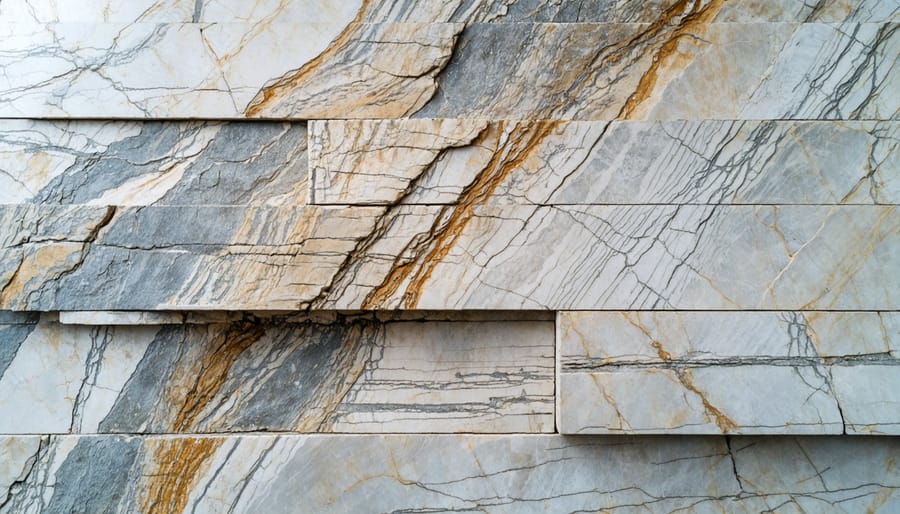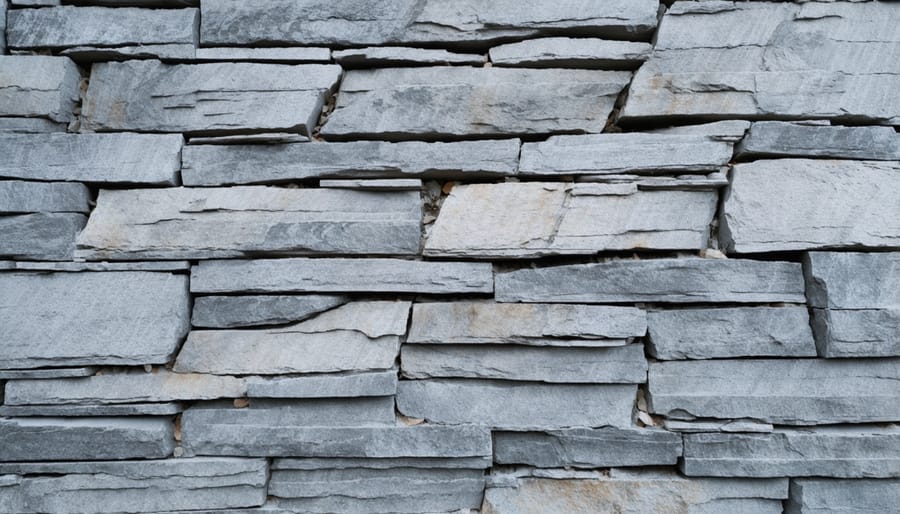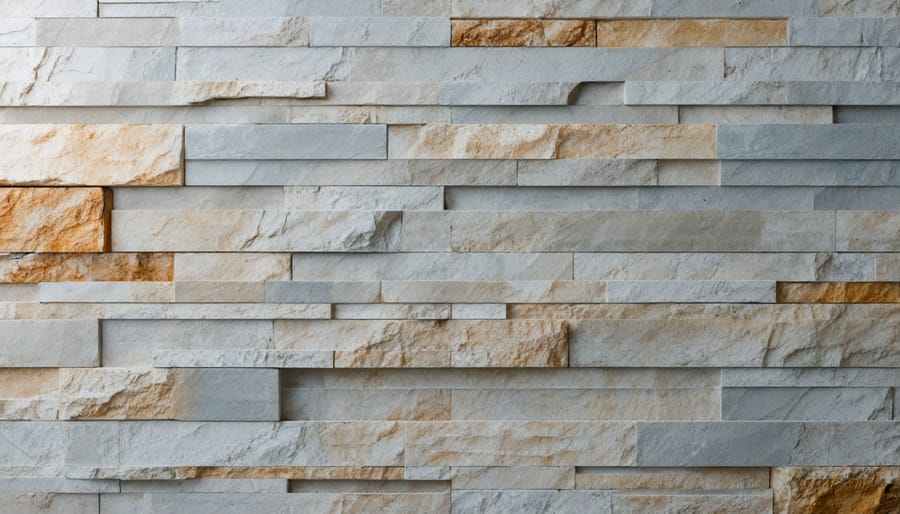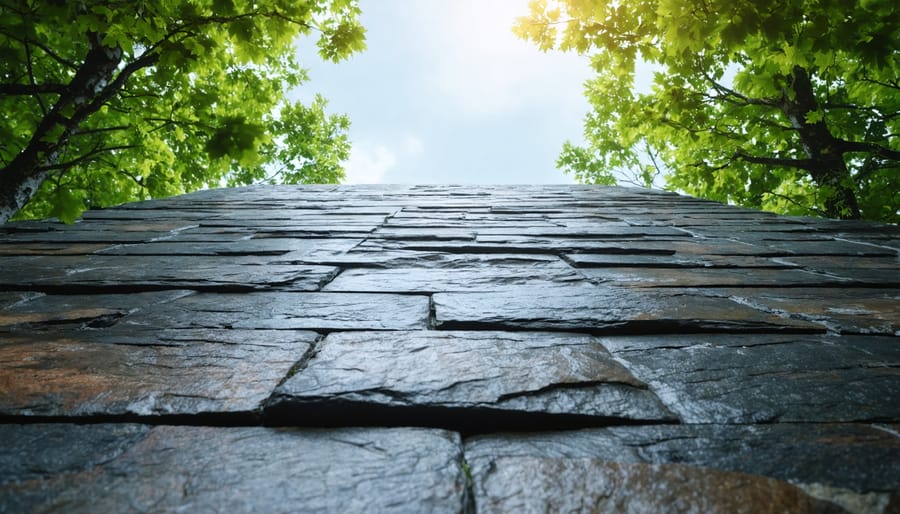Climate change risk assessment demands immediate, strategic action to protect natural stone installations and infrastructure investments. Combining rigorous project risk management with climate science data creates a robust framework for evaluating vulnerabilities and implementing adaptive solutions.
Rising temperatures, extreme weather events, and shifting precipitation patterns pose unprecedented challenges to stone structures and installations. These environmental stressors can accelerate material degradation, compromise structural integrity, and significantly impact long-term performance. Professional stakeholders must now integrate climate projections into their risk matrices, considering both immediate threats and projected changes over the installation’s lifecycle.
Forward-thinking organizations are already implementing comprehensive climate risk assessments, combining traditional engineering parameters with advanced climate modeling. This integrated approach enables more accurate prediction of potential impacts, from thermal stress and moisture penetration to extreme weather resilience. By identifying these risks early, stakeholders can develop targeted mitigation strategies that protect their investments while ensuring sustainable, climate-resilient outcomes.
This practical guide provides essential tools and methodologies for conducting thorough climate risk assessments specific to natural stone applications, helping professionals make informed decisions in an increasingly uncertain environmental landscape.
Understanding Climate Risks in Stone Construction
Temperature Fluctuation Impacts
Temperature fluctuations pose significant challenges to stone materials, particularly in regions experiencing extreme climate variations. When stone surfaces undergo rapid heating and cooling cycles, thermal expansion and contraction can lead to micro-cracks and structural stress. This is especially evident in areas where daily temperature swings exceed 20°C (68°F).
Different stone types react uniquely to temperature changes. For instance, granite typically shows excellent thermal stability, while softer stones like limestone may be more susceptible to temperature-induced damage. Dark-colored stones absorb more heat, making them particularly vulnerable to thermal shock in exposed installations.
The freeze-thaw cycle presents another critical concern. When water penetrates stone pores and freezes, it expands by approximately 9%, potentially causing spalling, cracking, and surface deterioration. Coastal regions and areas with high precipitation require special attention due to increased moisture exposure combined with temperature variations.
To mitigate these risks, proper installation techniques, including appropriate expansion joints and moisture barriers, are essential. Regular monitoring of stone surfaces, especially during extreme weather events, helps identify early signs of temperature-related stress and enables timely preventive maintenance.
Moisture and Precipitation Concerns
Changes in precipitation patterns and moisture levels pose significant challenges for natural stone installations. As climate change intensifies, many regions experience more frequent and intense rainfall events, while others face extended dry periods followed by sudden downpours. These fluctuations can impact stone materials in several ways.
Increased rainfall can lead to accelerated weathering of stone surfaces, particularly in porous varieties like sandstone and limestone. Water penetration may cause mineral dissolution, salt crystallization, and freeze-thaw damage in colder climates. Higher humidity levels can also promote biological growth such as algae and moss, which not only affects aesthetics but can deteriorate stone surfaces over time.
To mitigate these risks, proper drainage systems and water management solutions are essential. Surface treatments and sealants can provide additional protection against moisture infiltration, though these need regular maintenance and renewal. When selecting stone for exterior applications, consider local climate projections and choose materials with appropriate porosity and durability characteristics for expected moisture conditions.
Regular monitoring of rainfall patterns and humidity levels helps inform maintenance schedules and protective measures, ensuring long-term preservation of stone installations.

Essential Risk Assessment Steps
Site-Specific Analysis
Conducting a site-specific analysis is crucial for understanding how climate change may affect your natural stone installation. Begin by gathering historical climate data for your location, including temperature extremes, precipitation patterns, and severe weather events. Local weather stations and climate databases can provide this essential baseline information.
Next, examine climate projections specific to your region. Focus on key indicators such as projected temperature changes, rainfall patterns, and the frequency of extreme weather events over the next 30-50 years. These projections will help inform material selection and installation methods that affect long-term project costs.
Consider your site’s unique characteristics:
– Elevation and topography
– Proximity to water bodies
– Local vegetation and drainage patterns
– Sun exposure and prevailing winds
– Surrounding structures and their influence on microclimate
Document existing environmental stressors, such as freeze-thaw cycles, UV exposure, or salt spray in coastal areas. Pay special attention to how these factors might intensify with climate change. Analyze potential vulnerabilities specific to your site, such as flood risk zones or areas prone to erosion.
This detailed analysis will guide appropriate stone selection, installation methods, and preventive measures to ensure your stone installation remains resilient against future climate challenges.
Material Selection Criteria
When selecting stone materials for climate-resilient projects, several critical factors must be considered to ensure long-term durability and performance. Physical properties such as porosity, water absorption rate, and thermal expansion coefficient play crucial roles in determining a stone’s ability to withstand climate-related stresses. Comprehensive stone testing methods should be employed to evaluate these characteristics before making final selections.
Dense, low-porosity stones typically offer better resistance to freeze-thaw cycles and moisture penetration, making them ideal choices for regions experiencing extreme temperature fluctuations. Granite, quartzite, and certain varieties of limestone have proven particularly resilient in challenging climate conditions. The stone’s finish also impacts its performance – honed or flamed surfaces often provide better slip resistance in wet conditions compared to polished finishes.
Color selection deserves careful consideration, as darker stones absorb more heat and may experience greater thermal stress. In hot climates, lighter-colored stones can help reduce heat absorption and thermal movement. Additionally, the stone’s geological origin and formation process can indicate its natural resistance to weathering and environmental stresses.
Regional climate data should inform material choices, with particular attention paid to annual rainfall, temperature ranges, and exposure to marine environments. This information helps predict potential weathering patterns and guides appropriate protective treatments or maintenance requirements.
Mitigation Strategies
Design Adaptations
Modern architectural designs must adapt to evolving climate challenges while maintaining aesthetic appeal and structural integrity. Implementing sustainable stone practices in building design has become crucial for long-term resilience.
Key architectural adaptations include elevated foundation designs to protect against flooding, enhanced drainage systems, and strategic stone placement that considers future climate patterns. Protective measures often incorporate weather-resistant sealants, specialized mortar formulations, and innovative installation techniques that allow for thermal expansion.
Architects are increasingly incorporating climate-responsive features such as:
– Extended roof overhangs to protect stone facades from increased rainfall
– Ventilated wall systems that regulate temperature and moisture
– Strategic use of lighter-colored stones to reduce heat absorption
– Integration of water management systems within stone installations
– Flexible joint designs that accommodate extreme temperature fluctuations
These adaptations must balance immediate protection with long-term durability. For example, permeable paving solutions using natural stone can help manage increased stormwater while maintaining structural integrity. Similarly, the strategic positioning of stone elements can create natural shade and cooling effects, reducing the overall environmental impact of buildings while protecting the stone itself from climate-related stress.
Installation Best Practices
When installing natural stone in climate-sensitive environments, following proper installation techniques is crucial for long-term sustainability and resilience. Begin by conducting a thorough site assessment, paying particular attention to local climate patterns, drainage requirements, and potential exposure to extreme weather events.
For exterior installations, ensure proper foundation preparation with adequate drainage systems and moisture barriers. Use climate-appropriate setting materials and sealants that can withstand temperature fluctuations and moisture exposure. In areas prone to heavy rainfall or flooding, incorporate elevated installation methods and water management solutions.
Consider thermal expansion characteristics when selecting joint widths and movement accommodations. For regions experiencing extreme temperature variations, implement expansion joints at regular intervals and around perimeter areas. Use flexible sealants and setting materials that can accommodate thermal movement without compromising structural integrity.
In coastal areas or regions with high humidity, select corrosion-resistant anchoring systems and treatments. Apply appropriate sealers and protective coatings based on local climate conditions and exposure levels. Regular maintenance schedules should be adjusted according to climate-specific wear patterns.
Documentation of installation methods and materials used is essential for future reference and maintenance. Keep detailed records of climate considerations addressed during installation, including specific measures taken to mitigate identified risks. This information proves valuable for long-term maintenance and potential future modifications.

Maintenance and Monitoring
Regular monitoring and proactive maintenance are essential for protecting stone installations from the increasing impacts of climate change. A comprehensive maintenance strategy should include quarterly visual inspections of stone surfaces, joints, and supporting structures to identify early signs of weathering or damage.
Document all observations in a detailed maintenance log, including photographs and descriptions of any changes in the stone’s appearance, texture, or structural integrity. This historical record helps track degradation patterns and adjust protection measures accordingly.
Implement a cleaning schedule that accounts for local climate conditions. In areas with higher rainfall or humidity, more frequent cleaning may be necessary to prevent moss growth and mineral deposits. Use pH-neutral cleaners specifically formulated for natural stone to avoid chemical damage.
Seal stone surfaces according to manufacturer recommendations, typically every 3-5 years, but adjust the frequency based on exposure levels and weather patterns. Choose climate-appropriate sealants that offer protection against both water infiltration and UV damage.
Install monitoring equipment to track environmental conditions affecting stone installations. Temperature sensors, moisture meters, and weather stations can provide valuable data for anticipating and preventing climate-related deterioration.
Develop an emergency response plan for extreme weather events. This should include protective measures like temporary covers for severe storms and detailed procedures for post-event inspection and remediation.
Regularly review and update maintenance protocols as climate patterns evolve. Consider consulting with stone conservation specialists to incorporate new preservation techniques and technologies as they become available.
Establish partnerships with local weather monitoring services and climate research institutions to stay informed about changing environmental conditions that may affect stone installations. This information can help optimize maintenance schedules and protection strategies.
Remember that preventive maintenance is more cost-effective than reactive repairs. Investing in regular upkeep and monitoring helps ensure the longevity of stone installations despite challenging climate conditions.

Climate risk assessment has become an indispensable tool in safeguarding our natural stone installations and infrastructure against the increasing challenges posed by climate change. As we’ve explored throughout this article, a comprehensive approach to risk assessment enables better decision-making, cost-effective solutions, and improved resilience of stone structures.
The key to successful climate risk management lies in the systematic evaluation of potential threats, from extreme weather events to gradual environmental changes. By understanding these risks and implementing appropriate mitigation strategies, we can better protect our investments in natural stone and ensure their longevity.
Property owners, architects, and industry professionals must remain proactive rather than reactive in their approach to climate risk assessment. Regular monitoring, maintenance updates, and adaptation of protection measures are essential components of a robust risk management strategy. The integration of modern technology and traditional knowledge helps create more accurate risk predictions and more effective solutions.
Looking ahead, the importance of climate risk assessment will only continue to grow. As weather patterns become more unpredictable and extreme events more frequent, the value of thorough risk evaluation becomes increasingly apparent. By embracing comprehensive risk assessment practices now, we can better prepare our stone installations for future challenges while preserving their beauty and functionality for generations to come.
Remember that successful climate risk management is an ongoing process that requires regular updates and adjustments as new information and technologies become available.










